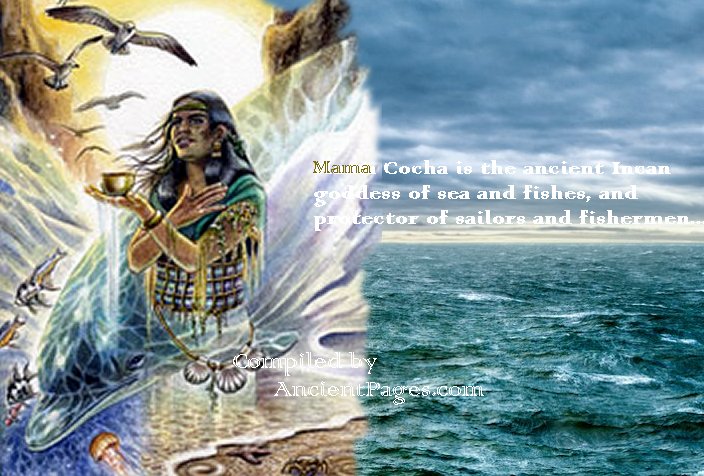Mama Cocha – Inca Goddess Of The Sea With Strong Connection To Lake Titicaca, Peru
A. Sutherland - AncientPages.com - In one of our latest articles, we presented Mama Ocllo, an important deity in the ancient beliefs of Inca people.
Today we write about Mama Cocha, known as ‘Sea Mother', Mother of the Waters’ (‘Laguna Madre’), whose powers were derived from the water.
In the Inca beliefs, Mama Cocha is one of the four elemental, divine mothers; the others are Mama Nina, the goddess of fire, Pachamama, the goddess of the earth and fertility, who presides over planting and harvesting and can cause earthquakes. The latter is Mama Waira, who teaches the Inca the art of spinning. These four deities were worshiped as mothers of life because they ruled everything that was considered natural elements such as land, fire, air, and water.
All rivers, lakes, mountains, animals, plants, and meteorological phenomena possess such a spirit, according to the Inca. The word ‘mama’ added to the name of any animal, is used to designate a gigantic prototype of the species or closely associated with them.
Mama Cocha is the ancient Incan goddess of sea and fishes, and protector of sailors and fishermen exposed to dangers at sea. She is also responsible for providing plenty of fish, preventing storms, and calming the waters for their safety.
She is the wife of Viracocha, the God of Heaven, and mother of Mama Quilla, goddess of the moon and fertility and Inti (Inti Tayta), the Sun god. This powerful goddess has even unlimited power over all bodies of water, including rivers, lagoons and lakes, tides, and the ocean.
See also:
Catequil – Cultural Hero And Inca God Of Thunder And Lightning
Gluskap: Mythical Hero Who Defeated Evil Sorcerers And Demon Followers
Story Of Atahualpa: The Last Emperor Of The Inca Empire
Still, first of all, she has a unique relationship with the Andean sacred lake, Lake Titicaca, which is central to the Inca creation stories. Its waters are said to be the tears of the Creator, and from this sacred lake emerged the sun and the moon, Inkari, and Collari, who were the first mother and father of the Inka Nation.
Mama Cocha has always been particularly important to people living alongside the coastal regions due to proximity and daily dependence upon the sea.
As it was centuries ago and today, throughout the entire coastal territory of Peru, Ecuador, Colombia, and northern Chile, an ancient belief in the Inca goddess Mama Cocha remains in force in these places where fishing is essential for the economy and well-being of its inhabitants. That is why Mama Cocha is worshiped and esteemed with great devotion, hoping she can provide a good fortune in fishing, and give sufficient protection of coastal towns against devastating tsunamis.
Even the farmers have to worship and make offerings to Mama Cocha because she controls annual rainfall that affects crop health, and is beneficial for agriculture.
Worship Of Mama Cocha
Rites of Mama Cocha have to be performed by women since this goddess gives relevance to her own gender, that is, to the feminine. The ceremony is organized every 8th of September and includes dances, music, and serving of food.
According to an old tradition, one way to worship the goddess of the sea is to bathe in its waters at midnight. The women who did it asked for health, beauty, strength, and fertility. Another tradition is held on the banks of lagoons and rivers, where believers bow to all the gods in order to invoke the great Mama Cocha.
This kind of ancient Inca rituals has survived to this day, being a source of inspiration for many new rites of this ancient culture.
Written by – A. Sutherland - AncientPages.com Senior Staff Writer
Copyright © AncientPages.com All rights reserved. This material may not be published, broadcast, rewritten or redistributed in whole or part without the express written permission of AncientPages.com
More From Ancient Pages
-
 Evidence Of Frightening Rituals Practiced By Ancient Steppe Nomads In Siberia – Discovered
Archaeology | Sep 19, 2020
Evidence Of Frightening Rituals Practiced By Ancient Steppe Nomads In Siberia – Discovered
Archaeology | Sep 19, 2020 -
 First Genomic Evidence Of Early Migration From New Guinea Into The Wallacea Archipelago – New Study
Archaeology | Jan 14, 2025
First Genomic Evidence Of Early Migration From New Guinea Into The Wallacea Archipelago – New Study
Archaeology | Jan 14, 2025 -
 Mysterious Handprint And Cry For Justice From Beyond The Grave
Featured Stories | Jan 2, 2020
Mysterious Handprint And Cry For Justice From Beyond The Grave
Featured Stories | Jan 2, 2020 -
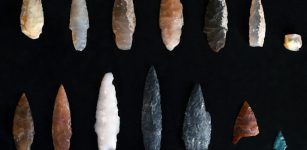 Oldest Known Projectile Points In The Americas Discovered In Idaho
Archaeology | Dec 23, 2022
Oldest Known Projectile Points In The Americas Discovered In Idaho
Archaeology | Dec 23, 2022 -
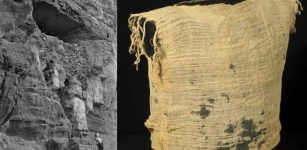 1,900-Year-Old Child’s Nightgown Found In Judean Cave Of Letters
Archaeology | Oct 5, 2023
1,900-Year-Old Child’s Nightgown Found In Judean Cave Of Letters
Archaeology | Oct 5, 2023 -
 Rare 500-Year-Old Wreck From Missing Ship Samson Discovered In Central Stockholm, Sweden
Archaeology | Dec 20, 2019
Rare 500-Year-Old Wreck From Missing Ship Samson Discovered In Central Stockholm, Sweden
Archaeology | Dec 20, 2019 -
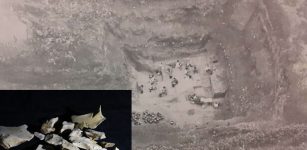 Evidence Humans Used Fire 1 Million Years Ago In Israel Discovered By Artificial Intelligence
Archaeology | Jun 15, 2022
Evidence Humans Used Fire 1 Million Years Ago In Israel Discovered By Artificial Intelligence
Archaeology | Jun 15, 2022 -
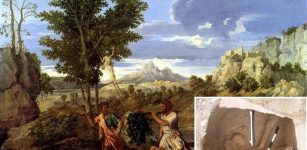 Mysterious Biblical Canaanites – What Ancient DNA Reveals About Their Fate
Archaeology | Jul 28, 2017
Mysterious Biblical Canaanites – What Ancient DNA Reveals About Their Fate
Archaeology | Jul 28, 2017 -
 Unexplained Accounts Of Mysterious Fires – ‘Burning’ Questions Remain Unanswered – Part 1
Featured Stories | Aug 2, 2019
Unexplained Accounts Of Mysterious Fires – ‘Burning’ Questions Remain Unanswered – Part 1
Featured Stories | Aug 2, 2019 -
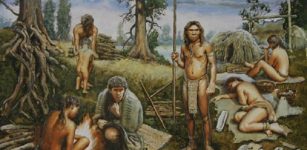 Humans Started Wearing Clothes 100,000 To 500,000 Years Ago
Ancient History Facts | Mar 17, 2018
Humans Started Wearing Clothes 100,000 To 500,000 Years Ago
Ancient History Facts | Mar 17, 2018 -
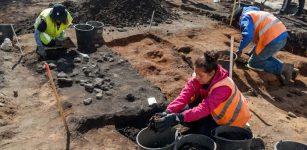 Unique Viking Age Hearths Discovered In Tallinn, Estonia
Archaeology | May 11, 2022
Unique Viking Age Hearths Discovered In Tallinn, Estonia
Archaeology | May 11, 2022 -
 Unique Page From Rare Illuminated Manuscript And Thousands Of Treasures Found Under The Floor Of Oxburgh Hall
Archaeology | Aug 18, 2020
Unique Page From Rare Illuminated Manuscript And Thousands Of Treasures Found Under The Floor Of Oxburgh Hall
Archaeology | Aug 18, 2020 -
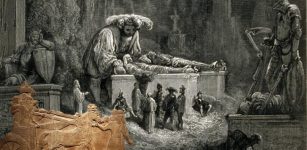 Cities Of Bashan Were Built By Ancient Giants – Archaeological Evidence Exists But Is Ignored
Biblical Mysteries | Nov 25, 2020
Cities Of Bashan Were Built By Ancient Giants – Archaeological Evidence Exists But Is Ignored
Biblical Mysteries | Nov 25, 2020 -
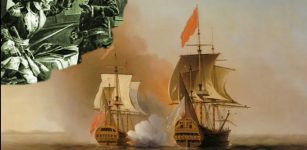 Did Captain Robert Jenkins’ Ear Start A War That Lasted 9 Years?
Ancient History Facts | Jun 24, 2017
Did Captain Robert Jenkins’ Ear Start A War That Lasted 9 Years?
Ancient History Facts | Jun 24, 2017 -
 Encounter Between Neanderthals And Homo Sapiens – Genome Study Traces The History
DNA | Oct 18, 2023
Encounter Between Neanderthals And Homo Sapiens – Genome Study Traces The History
DNA | Oct 18, 2023 -
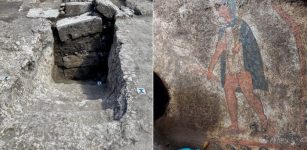 Extraordinary Painted Tomb Belonging To A Mercenary Warrior Found At Pontecagnano Necropolis
Archaeology | Oct 28, 2023
Extraordinary Painted Tomb Belonging To A Mercenary Warrior Found At Pontecagnano Necropolis
Archaeology | Oct 28, 2023 -
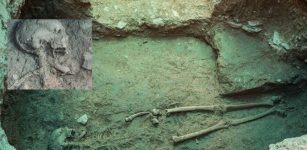 Human Skeleton Dated To Parthian Era Unearthed At Tepe Ashraf In Iran’s City Of Isfahan
Archaeology | Jul 25, 2020
Human Skeleton Dated To Parthian Era Unearthed At Tepe Ashraf In Iran’s City Of Isfahan
Archaeology | Jul 25, 2020 -
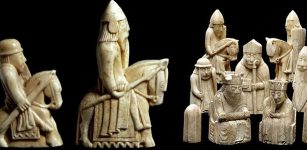 Mystery Of The Beautiful Viking Uig Chessmen Found On The Isle Of Lewis, Scotland
Artifacts | Dec 14, 2015
Mystery Of The Beautiful Viking Uig Chessmen Found On The Isle Of Lewis, Scotland
Artifacts | Dec 14, 2015 -
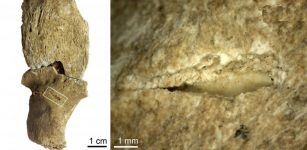 Jebel Sahaba: Analysis of 13,000-Years-Old Bones Reveals Prehistoric Violent Raids But Not A Single Armed Conflict
Archaeology | May 27, 2021
Jebel Sahaba: Analysis of 13,000-Years-Old Bones Reveals Prehistoric Violent Raids But Not A Single Armed Conflict
Archaeology | May 27, 2021 -
 Last Of The Giant Camels And Archaic Humans Lived Together In Mongolia Until 27,000 Years Ago
Fossils | Mar 24, 2022
Last Of The Giant Camels And Archaic Humans Lived Together In Mongolia Until 27,000 Years Ago
Fossils | Mar 24, 2022

